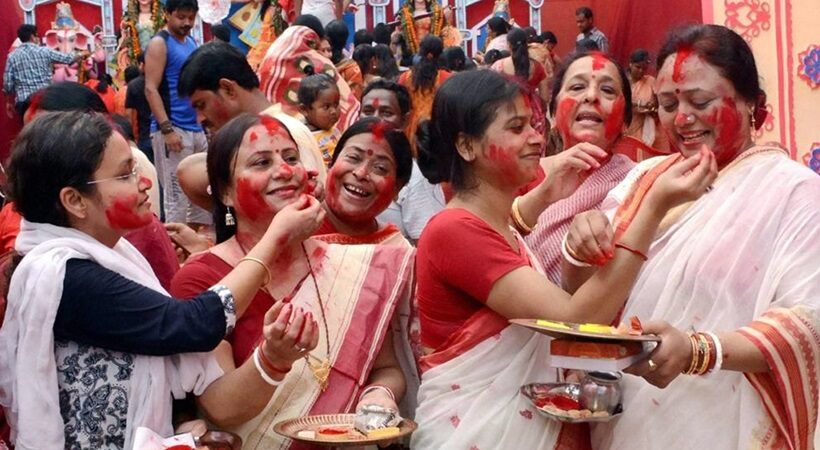Sindoor Khela is a traditional component of Durga Puja celebrations among the Bengali community in India. The ritual is performed during the conclusion of Durga Puja, before the immersion of the Durga idol, and it involves the application of vermilion powder or sindoor on the idols of Goddess Durga and among married women during Bijaya Dashami. Before the conclusion of Durga Puja 2021, prior to the immersion of the Durga idol, let’s take a look at the significance of Sindoor Khela.
History
As per Hindu mythology, the tradition began 200 years ago during Durga Puja at the Zamindar households to usher in bonhomie among the housewives. According to another theory, the tradition of Sindoor Khela is as old as Durga Puja, which is about 400 years old. Another commonly held belief is if a woman participates in Sindoor Khela by following the proper custom, she will never be widowed.
Significance of Sindoor Khela
Sindoor is a red or orange powder, which is traditionally made from lime or alum and turmeric. It attests to the marriage of women in traditional Hindu households. During the Hindu marriage rituals, a groom puts a sindoor on the bride’s forehead, a parting of hairs into two halves. During Sindoor Khela, married women traditionally apply the vermilion powder on the forehead of the Durga idol and offer sweets before her immersion (bisorjon). This symbolises her return to her children and animals at Kailash, the abode of her husband, Lord Shiva.
Bengali mothers traditionally applied sindoor on the foreheads of their married daughters before they left for their in-laws after visiting their paternal home. This application of the sindoor was treated as a form of blessing for women to strengthen their marital bonds. As Goddess Durga is treated both as a mother and daughter figure, the gesture naturally got extended to the Durga idols as well.



















